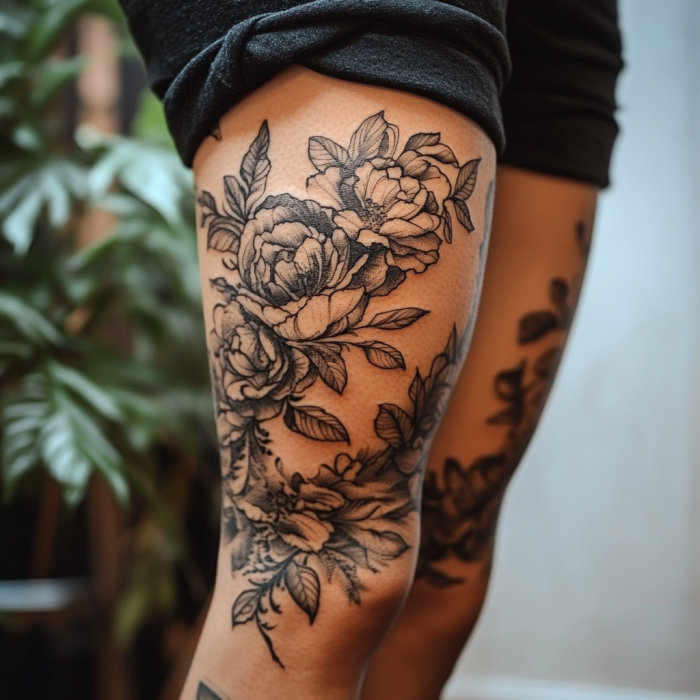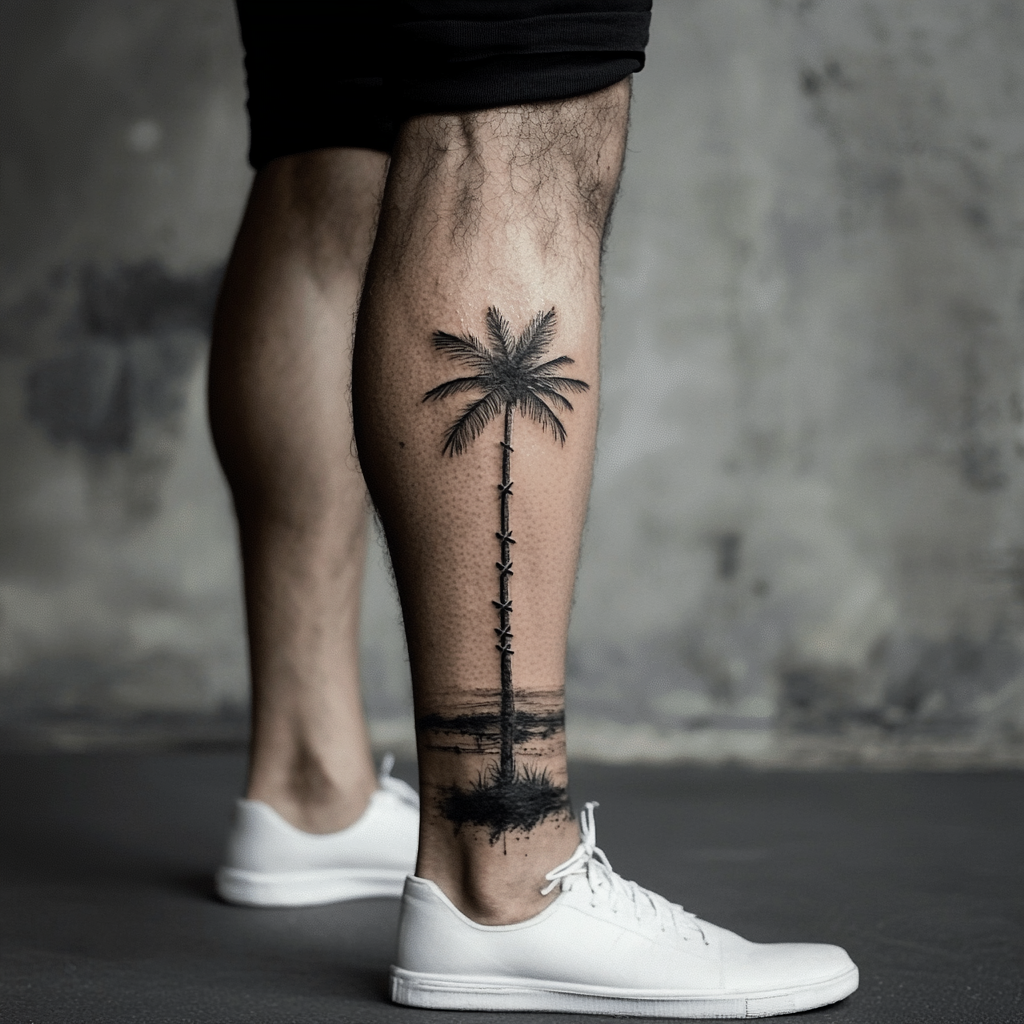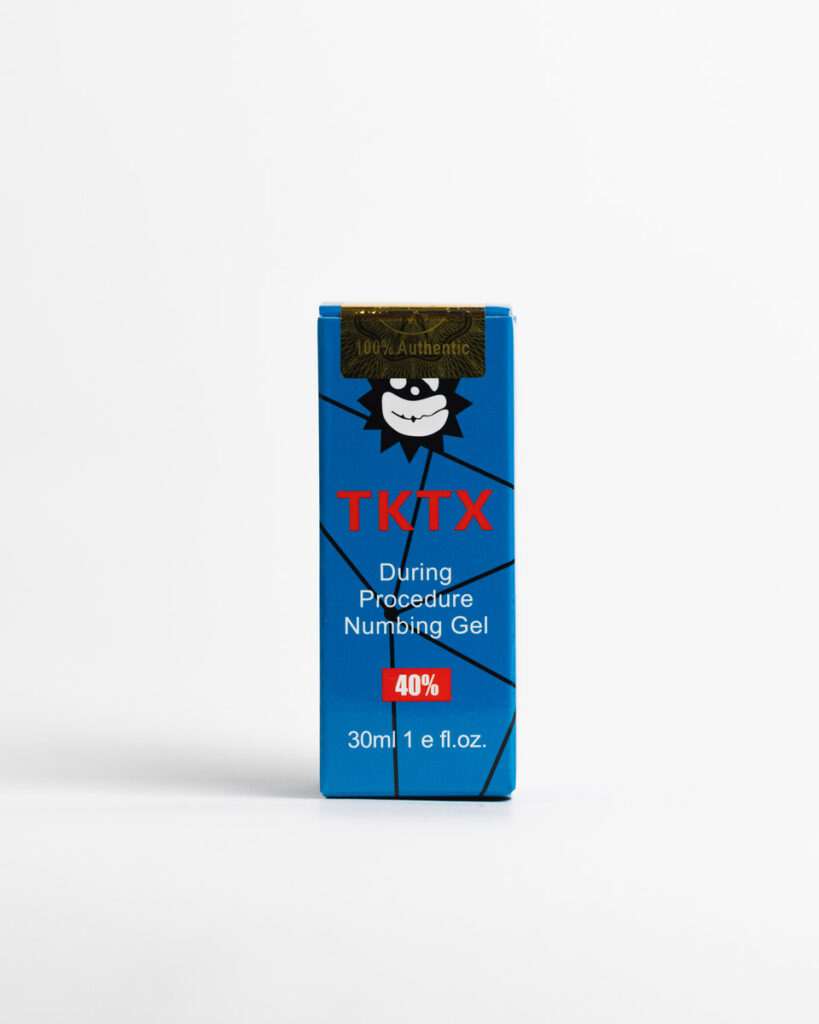
Knee Tattoo Numbing Cream Guide: Designs, Costs, Pain & Aftercare Tips
Knee tattoos have quickly become a standout choice for those eager to showcase their individuality. Unlike more traditional spots, the knee offers a unique canvas that invites creativity and boldness.
We admire the bravery it takes to adorn such a sensitive and challenging area. The knee’s proximity to bone and its constant movement makes it one of the more demanding spots to get inked. But, this very challenge has led to some of the most intricate and eye-catching designs in the tattoo world.
Whether you’re a seasoned enthusiast or contemplating your first knee tattoo, our selection of ideas is here to inspire your next ink adventure. Join us as we explore the artistry and dedication behind knee tattoos, and discover how this unconventional placement can perfectly express your style.
How Painful Are Knee Tattoos?
Knee tattoos rank among the most painful areas for tattooing. The thin skin at the knee ditch offers minimal padding between the skin and bone, intensifying the sensation during the process. Also, the high concentration of nerve endings, including the sciatic nerve, heightens sensitivity and discomfort.

The bony structure of the kneecap further contributes to the pain experienced. Surrounded by areas with little muscle or fat, the lack of cushioning exacerbates the discomfort. Tattoo sessions on the knee often involve longer durations and intricate designs, requiring multiple needle passes, which can increase the overall pain level.
To manage the discomfort, many opt for tattoo-numbing creams. Products like TKTX offer effective solutions to reduce pain during tattoo procedures. Utilizing a numbing cream can make the tattooing experience more bearable, allowing for better focus on the artistry and design.
Time Investment for a Knee Tattoo
Design and Size
The duration to complete a knee tattoo varies with design complexity and size. Blackwork tattoos typically require less time than colour tattoos. For example, intricate large designs covering the entire knee area demand more sessions compared to smaller, simpler patterns.
Session Duration
Full-colour knee tattoos can span multiple hours. A full-colour pink peony on the knee took approximately 4 hours with breaks. Another peony by a different artist required around 5-6 hours spread over two sessions.
Breaks and Healing
Sessions usually include breaks to manage discomfort. Colour tattoos often necessitate multiple sessions to allow healing between each. The general healing timeline for knee tattoos ranges from 4 to 6 weeks, influenced by factors like personal health, age, tattoo size, and aftercare regimen.
| Factor | Time Investment |
|---|---|
| Blackwork Tattoo | Fewer hours per session |
| Colour Tattoo | Multiple sessions needed |
| Full-Colour Peony | 4 hours with breaks |
| Alternative Peony | 5-6 hours over two sessions |
| Healing Timeline | 4 to 6 weeks |
Using tattoo numbing creams, such as TKTX, can make sessions more comfortable, potentially improving focus and efficiency during the tattooing process.
Cost Factors for Knee Tattoos
Size and Complexity
The size of your knee tattoo significantly impacts its cost. Small, simple designs typically range from £100 to £200. In contrast, larger or more intricate tattoos can cost between £300 and £1,000 or more. Complex designs require additional time and expertise from the artist, which increases the overall price.
Body Placement
Tattooing the knee area presents unique challenges due to its curvature and proximity to bone and tendons. This difficulty can lead to higher costs, with some artists charging an extra 10% to 25% for knee tattoos. The increased price compensates for the additional skill and time required to ensure quality work on this sensitive area.
Aftercare and Touchups
Maintaining a knee tattoo’s vibrancy may involve purchasing aftercare products and occasional touchups. Due to the knee’s high mobility, fresh tattoos in this area might require periodic touchups, adding to the total cost. Also, some opt for tattoo numbing creams like TKTX to reduce discomfort during the procedure, which can contribute to the overall expense.
| Tattoo Size | Price Range (£) |
|---|---|
| Small, Simple | 100 – 200 |
| Larger, Complex | 300 – 1,000+ |
Preparing for a New Knee Tattoo
Pain and Comfort
Preparing for a knee tattoo involves managing significant discomfort. We use tattoo numbing creams like TKTX to alleviate pain during sessions. Exfoliating the knee area beforehand ensures smoother skin application. Eating a hearty breakfast maintains energy levels throughout the process. Mentally preparing for heightened pain helps us endure the session more effectively.
Time and Sessions
The duration of knee tattoo sessions depends on design complexity and size. Blackwork tattoos generally require less time compared to colour designs. Full-colour knee tattoos typically take between 4 to 6 hours and may be split into two sessions to allow for healing. The table below summarizes the estimated time:
| Tattoo Type | Duration per Session | Number of Sessions |
|---|---|---|
| Blackwork | 2-3 hours | 1 |
| Colour | 4-6 hours | 2 |
Placement and Design
Deciding on placement involves choosing between integrating the knee into a leg sleeve or treating it as a standalone piece. Standalone knee cap tattoos often feature traditional designs such as mandalas, roses, or sacred hearts. Incorporating the knee into a sleeve offers a more unified leg tattoo. Considering the knee’s movement and flexibility is crucial when selecting your design to ensure longevity and clarity.
Choosing the Right Placement
Selecting the optimal placement for your knee tattoo ensures longevity and visual appeal. We consider the unique characteristics of each area to help you make an well-informed choice.
Knee Cap Tattoo
Knee cap tattoos cover the patella and surrounding region. Common designs include peonies, bear heads, roses, mandalas, and sacred hearts. This area’s bony structure and thin skin result in increased sensitivity, making the process more painful. Precision in design placement is crucial to accommodate the knee’s curvature and movement. Choosing high-quality tattoo numbing cream, such as TKTX, can alleviate discomfort during the session.
Above Knee Tattoo
Above knee tattoos reside on the lower thigh, allowing for either standalone pieces or integration into a larger leg sleeve. Designs like floral frames, butterflies, cut-out mandalas, and barbed wire complement the area’s ample space. Movement and skin stretching above the knee may impact the tattoo’s appearance over time. Maintaining diligent aftercare minimizes fading and distortion, ensuring the tattoo remains vibrant and clear.
Below Knee Tattoo
Below knee tattoos, also known as upper shin tattoos, frame the knee from underneath. Suitable designs include horseshoes, chunky charm bracelets, flowers, floral bands, moths, and bats. This placement benefits from the shin’s flatter surface, enhancing design clarity. But, the area is still subject to movement and requires proper aftercare to preserve the tattoo’s detail and colour.
TKTX numbing cream for knee tattoo

Using TKTX numbing cream can significantly reduce pain during a knee tattoo session. Applied correctly, it allows us to work more efficiently and focus on intricate designs even though the area’s sensitivity. TKTX numbing cream is water-based, ensuring it doesn’t interfere with tattoo ink or the healing process.
Benefits of TKTX Numbing Cream
- Pain Reduction: Minimizes discomfort associated with the bony kneecap and sensitive surrounding skin.
- Enhanced Focus: Helps us maintain concentration during long sessions, especially for detailed blackwork or colour tattoos.
- Safe Application: Water-based formula ensures compatibility with tattoo ink and promotes better healing.
- Convenient Use: Easy to apply before the session, maximizing its numbing effects.
Application Guidelines
- Clean the Area: Ensure the knee is free from oils and dirt.
- Apply Evenly: Spread a thick layer of TKTX numbing cream over the tattoo area.
- Wait Time: Allow the cream to sit for 20-30 minutes before starting the tattoo session.
- Remove Excess: Gently wipe off any excess cream before beginning the tattoo process.
- Allergic Reactions: Conduct a patch test 24 hours before to ensure no adverse reactions.
- Duration of Numbing: Typically lasts 1-2 hours, adequate for most knee tattoo sessions.
- Reapplication: If needed, reapply the cream between sessions to maintain numbness.
By incorporating TKTX numbing cream into our knee tattoo procedures, we enhance both comfort and the quality of the final design, making the tattoo experience more manageable for our clients.
Healing Process for Knee Tattoos
Initial Healing Phase (First 3-5 Days)
In the first 3-5 days, keep the knee tattoo moisturised with a fragrance-free product like Aquaphor to prevent drying and promote healing. The tattoo often swells and bruises; icing reduces swelling and discomfort. Avoid heavy activities such as weight lifting and yoga during this period to allow healing to begin without interruption.
Scabbing and Peeling Phase (Days 4-14)
From day 4 or 5 onward, the tattoo may scab and enter a peely, itchy stage. Refrain from scratching or picking at the scabs to prevent infection and ensure proper healing. Due to the knee’s high mobility, avoid excessive bending to prevent scab cracking and ink fallout. Maintain diligent aftercare by regularly cleaning with non-alcoholic solutions and applying recommended moisturisers to support deeper skin healing.
Longevity and Fading of Knee Tattoos
Skin Movement and Stretching
The knee’s constant movement and stretching accelerate tattoo aging. As the skin around the knee expands and contracts, ink disperses, leading to faster fading. This movement often causes line blowout and colour loss, reducing the tattoo’s sharpness over time.
Healing Process
Healing knee tattoos typically takes 4 to 6 weeks. Swelling and tenderness are common initially. Continuous movement and pressure from walking can delay healing, impacting the tattoo’s quality. Resting and avoiding strenuous activities during this period support proper healing and maintain the tattoo’s vibrancy.
Risks and Considerations
Infection Risk
Knee tattoos carry an infection risk, especially without proper sterilisation or if the ink is contaminated. Individuals with compromised immune systems, such as those with autoimmune diseases or taking immunosuppressive medications, face a higher risk of infection.
Skin Reactions and Allergic Responses
Tattoo ink may cause allergic reactions, hypersensitivity, and granuloma formation. These reactions can occur years after the tattoo is applied and are more common with certain ink colours like red, green, yellow, and blue. Components such as chromium, cadmium, and cobalt in these inks contribute to the increased likelihood of adverse skin reactions.
Psoriatic Arthritis Flares
For those with psoriatic arthritis or psoriasis, the physical trauma from getting a tattoo can trigger flare-ups, known as the Koebner phenomenon. This response can exacerbate symptoms and affect the overall health of the individual.
Knee Tattoo Ideas
A variety of designs make knee tattoos a standout choice. We explore popular styles that complement the knee’s unique shape.
Mandala Tattoos
Mandala tattoos top the list for knee placements. Their intricate, circular patterns align well with the knee’s anatomy, enhancing visual impact. Whether covering the kneecap or integrated into a leg sleeve, mandalas offer timeless beauty.
Floral Tattoos
Floral designs excel on the knee, particularly peonies and roses. They adapt to the kneecap’s shape, allowing diverse colours and intricate details. Floral tattoos blend aesthetics with the knee’s natural curves, creating a harmonious look.
Geometric Tattoos
Geometric tattoos provide sharp lines and precise patterns suited for the knee’s structure. Designs like triangles, hexagons, and intricate line work enhance the area’s contours. Their symmetry ensures visual balance, making them a popular choice for bold statements.
Tribal Tattoos
Tribal designs offer bold, flowing patterns ideal for knee placements. Their strong lines and cultural significance add depth to the tattoo. Tribal tattoos can wrap around the knee or extend into surrounding areas, creating a dynamic appearance.
Minimalist Tattoos
Minimalist tattoos appeal to those seeking subtlety. Simple lines, small symbols, and discreet designs fit well on the knee without overwhelming the area. Their understated elegance makes them perfect for first-timers or those preferring a less conspicuous look.
Frequently Asked Questions
How painful are knee tattoos?
Knee tattoos are considered one of the most painful to receive due to the thin skin and high concentration of nerve endings around the area. The proximity to bone and constant movement adds to the discomfort, making the experience intense. Many individuals compare the pain to having a leg sawed off for several hours. However, using numbing creams like TKTX can help alleviate some of the pain, making the process more manageable.
How long does it take to get a knee tattoo?
The time required for a knee tattoo varies based on design complexity and size. Blackwork tattoos typically take 2-3 hours in a single session, while colour tattoos may require 4-6 hours spread over two sessions. Intricate designs covering the entire knee area can extend the duration, often necessitating multiple visits to complete the artwork effectively.
What is the cost of a knee tattoo?
The cost of a knee tattoo depends on the size and intricacy of the design. Small, simple tattoos generally range from £100 to £200, whereas larger or more detailed designs can cost between £300 and £1,000 or more. Due to the unique challenges of tattooing the knee, some artists may charge an additional 10% to 25%, and ongoing maintenance like aftercare products and touch-ups can add to the overall expense.
How should I prepare for a knee tattoo session?
Preparation for a knee tattoo includes managing discomfort by using numbing creams, exfoliating the area, and having a hearty breakfast to maintain energy levels. It’s also important to mentally prepare for the heightened pain. Wearing comfortable clothing and ensuring you have arranged for breaks during the session can help make the process smoother and more tolerable.
What are the best placements for knee tattoos?
Optimal knee tattoo placements include the knee cap, above the knee on the lower thigh, and below the knee on the upper shin. Knee cap tattoos often feature designs like mandalas and peonies, while above knee tattoos may incorporate floral frames or butterflies. Below knee placements benefit from a flatter surface, enhancing design clarity. Each placement considers the area’s movement and flexibility to ensure the tattoo remains vibrant and detailed over time.
How do I care for a new knee tattoo?
Healing a knee tattoo typically takes 4 to 6 weeks. During the initial 3-5 days, keep the tattoo moisturised with a fragrance-free product and manage swelling with icing. From days 4 to 14, avoid scratching or picking at scabs and continue diligent aftercare to support proper healing. Avoid heavy activities and strenuous movements to prevent delaying the healing process and maintain the tattoo’s quality.
Can knee tattoos fade quickly?
Yes, knee tattoos can fade faster due to the constant movement and stretching of the knee. This can lead to ink dispersal, resulting in quicker fading, line blowout, and colour loss. To maintain the tattoo’s vibrancy, it is essential to follow proper aftercare, avoid excessive movement during healing, and consider regular touch-ups to preserve the design’s sharpness over time.
What are popular knee tattoo designs?
Popular knee tattoo designs include mandalas for their intricate patterns, floral designs like peonies and roses that complement the knee’s curves, geometric tattoos with sharp lines and symmetry, and tribal patterns that flow around the knee. For those preferring subtlety, minimalist tattoos with simple lines and small symbols offer understated elegance, making them ideal for first-timers or those seeking a less conspicuous look.
Are there risks associated with knee tattoos?
Knee tattoos carry risks such as infection, especially if proper sterilisation isn’t maintained or if the ink is contaminated. Individuals with compromised immune systems are at higher risk. Additionally, allergic reactions to tattoo ink can occur, and those with psoriatic arthritis may experience flare-ups due to the physical trauma of tattooing. It’s important to consult with a professional tattoo artist and consider these factors before proceeding.
How can numbing creams like TKTX help with knee tattoos?
Numbing creams like TKTX can significantly reduce pain during knee tattoo sessions, enhancing client comfort and focus. Applying the cream according to guidelines—cleaning the area, applying an even layer, and allowing it to sit for 20-30 minutes—can make the tattooing process more manageable. TKTX is safe to use with tattoo ink, promotes better healing, and allows for more efficient sessions by minimizing discomfort.
